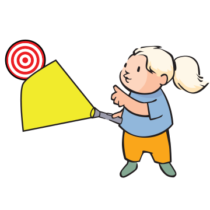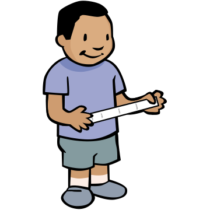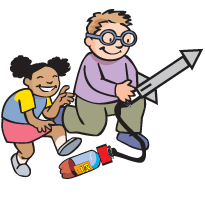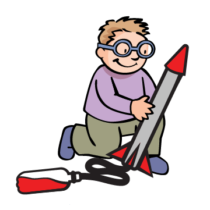Boston Children's Museum
308 Congress Street, Boston, MA 02210
617-426-6500
© Boston Children’s Museum 2025
Website Design by Jackrabbit
Our solar system is truly enormous. Developing a sense of just how enormous is difficult, however. A good starting point to this understanding is to have children explore the relative distances across our solar system, and this game provides a fun way to do that. This is also a great activity for learning about the major bodies in our solar system, and to practice measuring and estimating.
VIEW ACTIVITY
Engineering activities give kids a chance to develop problem solving and observation skills, to work with interesting and engaging tools and materials, and to learn how to work as a member of a team. In this activity, children get a chance to do all that—and to launch their creations into the air! This is a simple, but very fun way to connect children to the science and engineering that NASA aerospace engineers, rockets scientists, and others use when they design and create the huge rockets that we send into space.
VIEW ACTIVITY
Design challenges are a great way for kids to develop a range of skills, like problem solving, communicating, observing, comparing, measuring, estimating, and lots more. This challenge, which is best for your older students, also asks children to examine properties of materials, practice engineering design, and learn about the properties of planets in our solar system.
VIEW ACTIVITY
Many cultures have traditions related to weather, weather prediction and even trying to influence the weather, making the topic of meteorology not only a great entry point to science, but also to the shared connection every culture has to weather events. This activity is a great introduction to Japanese culture and a fun way to connect science, culture, and art together.
VIEW ACTIVITY
How can art help kids engage with science? The natural world is the source of so much inspiration in art, literature, invention and much more, and the images produced by NASA and others’ space telescopes is some of the most breathtaking and inspiring imagery imaginable. Associating science with art presents the world as a place filled with connections, and helps children to practice two often overlooked STEM skills – creativity and imagination. And by asking children to use astronomical images as inspiration for their artwork, you are also asking them to closely observe – and therefore learn more about – these astronomical objects and phenomena.
VIEW ACTIVITY
Constellations are pictures that people have imagined in the patterns of the stars. They are now accepted scientific ways of organizing our view of the night sky. But this idea that scientific classifications, like constellations, could have begun with imagination might surprise people. Albert Einstein once said, “Imagination is more important than knowledge.” Pretty smart. This activity invites children to look at star patterns and imagine their own new constellations, while practicing STEM skills like observing, recognizing patterns and thinking creatively. This kind of creative activity encourages children to make personal connections to objects in the sky, and to seek out their new constellation when they look up at night.
VIEW ACTIVITY
This activity is a good follow-up to the Let Your Light Shine activity from this curriculum, and is a fun game to play. Activities like these help to reinforce a beginning understanding of the behaviors of light, and how those behaviors can be utilized and manipulated with different materials.
VIEW ACTIVITY
Our solar system is truly enormous. Developing a sense of just how enormous is difficult for almost anyone, let alone children. A good starting point to understanding how vast the universe is, is to have children explore the relative distances across our solar system, and this activity provides a fun first step in that understanding. This is also a great activity for learning about the major bodies in our solar system, and to practice measuring, estimation and fractions.
VIEW ACTIVITY
Engineering activities give kids a chance to develop problem solving and observations skills, to work with interesting and engaging tools and materials, and to learn how to work as a member of a team. In this activity, children get a chance to do all that—and to launch their creations into the air!
VIEW ACTIVITY
Engineering activities give kids a chance to develop problem solving and observations skills, to work with interesting and engaging tools and materials, and to learn how to work as a member of a team. In this activity, children get a chance to do all that—and to launch their creations into the air!
VIEW ACTIVITY